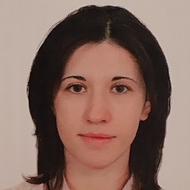- A
- A
- A
- ABC
- ABC
- ABC
- А
- А
- А
- А
- А
- HSE University
- Faculties
- Faculty of Economic Sciences
- School of Finance
- News
- Model of Predator-Prey Relationship Helps Predict Spread of COVID-19
-
The School
- ABOUT
- Staff Members
- Doctoral Students
- Joint Departments with Partner Companies
-
RESEARCH ACTIVITIES
- Laboratories
- Series “Advanced Studies in Emerging Market’s Finance” at Springer Nature o Networking with International Academic Associations
- Networking with International Academic Associations
- Journal of Corporate Finance Research
- Research Seminars
- International PhD Workshop
- International Seminar “Systemic Risks in the Financial Sector”
- International Conference «ESG Corporate Dynamics: the Challenges for Emerging Capital Markets»
- Yasin (April) International Academic Conference
-
RESEARCH WORKING GROUPS
- Research Working Group "Innovations in the Banking Sector, its Financial Stability and Prudential Regulation"
- BUSINESS EDUCATION
- Networking with Business Associations
- Networking with Professional Associations
-
DATABASES
-
119049 Moscow, Russia
11 Pokrovskiy boulevard, room S629
Phone:
+7 (495) 772-95-90*27447, *27947, *27190
+7 (495) 916-88-08 (Master’s Programme Corporate Finance)
- Email: df@hse.ru
Head of Corporate Finance Research Center, Dr., tenured professor
The HSE School of Finance is the leading Russian competence center in the field of corporate finance, business valuation, banking, stock market, risk management and insurance, accounting and audit.
HSE is the first Russian university in the global ranking "QS - World University Rankings by subject", 2022 in the subject area of Accounting and Finance. Moreover, the university is the 1-st in the rating "THE World University Rankings by subject" in the subject area of Business & Management Studies, 2022
Cherkasova V. A., Nenuzhenko I.
Journal of Economic Integration. 2022. Vol. 37. No. 1. P. 54-92.
Electronic Journal of Applied Statistical Analysis. 2022. Vol. 15. No. 1. P. 187-210.
Kolade S. A., Semenova M.
Financial Economics. FE. Высшая школа экономики, 2022. No. WP BRP 87/FE/2022.
Управление финансовыми рисками. 2022. Т. 70. № 2. С. 108-120.
In bk.: The 8th International Conference on Information Technology and Quantitative Management (ITQM 2020 & 2021): Developing Global Digital Economy after COVID-19. Vol. 199: The 8th International Conference on Information Technology and Quantitative Management (ITQM 2020 & 2021): Developing Global Digital Economy after COVID-19. Manchester: Elsevier, 2022. P. 798-805.
Korablev D., Poduhovich D.
Journal of Corporate Finance Research. 2022. Vol. 16. No. 1. P. 136-145.
Olkhovik V., Lyutova O. I., Juchnevicius E.
Financial journal. 2022. Vol. 14. No. 2. P. 73-90.
Churyk N. T., Anna Vysotskaya, Kolk B. v.
Journal of Accounting Education. 2022. Vol. 58.
Абдрахманова Г. И., Васильковский С. А., Вишневский К. О. и др.
М.: Издательский дом ГУ-ВШЭ, 2022.
Абдрахманова Г. И., Васильковский С. А., Вишневский К. О. и др.
М.: Национальный исследовательский университет "Высшая школа экономики", 2022.
Гришунин С. В., Сулоева С. Б., Пищалкина И. И.
Организатор производства. 2022. Т. 30. № 1. С. 60-72.
Гришунин С. В., Сулоева С. Б., Пищалкина И. И.
Экономический анализ: теория и практика. 2022. Т. 21. № 3. С. 478-496.
S. Grishunin, E. Naumova, N. Lukshina et al.
Russian Management Journal. 2021. Vol. 19. No. 4. P. 475-493.
Journal of Corporate Finance Research. 2022. Vol. 16. No. 1. P. 99-112.
Grishunin S., Bukreeva Alesya, Alyona A.
In bk.: The 8th International Conference on Information Technology and Quantitative Management (ITQM 2020 & 2021): Developing Global Digital Economy after COVID-19. Vol. 199: The 8th International Conference on Information Technology and Quantitative Management (ITQM 2020 & 2021): Developing Global Digital Economy after COVID-19. Manchester: Elsevier, 2022. P. 190-197.
 International Conference “Future Directions in Accounting and Finance Education”, 27-28 May 2019, Moscow, Russia
International Conference “Future Directions in Accounting and Finance Education”, 27-28 May 2019, Moscow, Russia
Edited by: А. Б. Высотская, B. v. Kolk.
Vol. 58. Elsevier, 2022.
Karamysheva M., Seregina E.
Journal of International Money and Finance. 2022. Vol. 127.
In press
Journal of Economic Dynamics and Control. 2022. Vol. 137.
Journal of Economic Dynamics and Control. 2022. Vol. 138.
Известия Санкт-Петербургского государственного экономического университета. 2022. № 4. С. 144-155.
Тихомиров Д. В., Цехомский Н. В.
Экономика и управление. 2022. Т. 28. № 1. С. 16-24.
Селезнёва З. В., Евдокимова М. С.
Финансы: теория и практика. 2022. Т. 26. № 3. С. 64-84.
Evdokimova M., Stepanova A. N.
In bk.: 38th EBES Conference - Program and Abstract Book. Istanbul: EBES, 2022. P. 39.
Assanskiy A., Shaposhnikov D., Tylkin I. et al.
Journal of Behavioral and Experimental Economics. 2022. Vol. 98.
Teplova T., Mikova E., Munir Q. et al.
Economic Change and Restructuring. 2023. Vol. 56. No. 1. P. 515-535.
Повх К. С., Кокорева М. С., Степанова А. Н.
Экономический журнал Высшей школы экономики. 2022. Т. 26. № 1. С. 9-36.
Anton Markov, Zinaida Seleznyova, Victor Lapshin.
Journal of Finance and Data Science. 2022. Vol. 8. P. 180-201.

Model of Predator-Prey Relationship Helps Predict Spread of COVID-19

Researchers from the HSE Faculty of Economic Sciences have proposed a mathematical model that describes the course of the COVID-19 pandemic, taking into account the restrictions applied in different countries. The model will help governments make reasonable and timely decisions on introducing or lifting restrictions. The paper was published in Eurasian Economic Review.
In 2020, the coronavirus pandemic showed the world that our understanding of the spread of infectious diseases and the effectiveness of implemented policies is limited. The first countries to experience disease outbreaks did not have any similar examples they could draw on to fight the pandemic. Precise and reliable models that describe the spread of infection and the consequences of various restrictions would help governments make better decisions.
The basic model usually used to describe the development of epidemics includes the shares of people who are healthy, infected and recovered. It has modifications that can be applied to diseases that do not provide permanent immunity, as well as long pandemics (over a year), for which birth and mortality rates are important. But all of these are poorly suited to forecasting the coronavirus pandemic—they do not account for restrictions, which can strongly impact the results of the calculations. The authors of the paper have proposed a model capable of predicting the length and severity of infection waves in countries with different COVID-19 prevention policies.
The authors based their model on the Lotka-Volterra model, which was developed in 1925–1926 to describe the interaction of two biological roles: predator and prey. The researchers adapted it to predict the distribution of a disease: the variable responsible for the number of prey was used to describe the share of the population available for infection, while the infected function as predators. The speed at which the share of healthy people decreases depends on the effectiveness of containment measures, while the growth of the share of infected depends on the scale of the pandemic, the share of those who have not been infected, the strictness of restrictive measures, and the probability of infection during the pandemic’s decline.
The model was validated using data on the 2014–2015 Ebola virus epidemic. It successfully calculated the total number of infected and the peak of infection (the day with the highest number of new cases). The model was then applied to the COVID pandemic. To do so, the researchers compiled a database on the number of registered cases on each day of the first half of 2020 for 20 member countries of the World Health Organization, as well as on containment policies implemented by the governments of these countries. Then, they compared the results of the calculation to real-life data and determined the reasons for any deviations.
The data collected also allowed them to test several hypotheses. For example, for most observed countries, the severity of the second wave of the pandemic directly depended on the speed at which restrictions were lifted. This correlation turned out to be particularly strong in countries where the daily number of new cases was approaching zero and the authorities started to lift restrictions quickly (Serbia, Czech Republic, Bosnia and Herzegovina, Romania). One notable example is China, where the level of restrictive measures had been high before the pandemic eased, which led to a considerable decrease in its lethality. On the other end of the spectrum is the USA, which demonstrated a variety of attitudes towards self-isolation policies, resulting in severe consequences during the early stages of the spread of the disease.

Alexander Karminsky, co-author of the study and Research Professor at the HSE Faculty of Economic Sciences
‘Our estimates demonstrated that active policies to prevent the spread of COVID do correlate with a decrease in the number of infections. During the study, we also saw that specific social aspects and factors, particularly social habits, seriously impact the effectiveness of containment measures.’
The model helps understand whether restrictions can be lifted at a given moment or whether it is too early to do so. The authors emphasize that the model was developed during the pandemic, when many things (such as the severity of the third and subsequent waves) remained unknown. New data may impact the results and conclusions, but the model serves as a strong foundation for future research.
- About
- About
- Key Figures & Facts
- Sustainability at HSE University
- Faculties & Departments
- International Partnerships
- Faculty & Staff
- HSE Buildings
- Public Enquiries
- Studies
- Admissions
- Programme Catalogue
- Undergraduate
- Graduate
- Exchange Programmes
- Summer Schools
- Semester in Moscow
- Business Internship
-
https://elearning.hse.ru/en/mooc/
Massive Open Online Courses
-
https://www.hse.ru/en/visual/
HSE Site for the Visually Impaired
-
http://5top100.com/
Russian Academic Excellence Project 5-100
- © HSE University 1993–2025 Contacts Copyright Privacy Policy Site Map
- Edit




